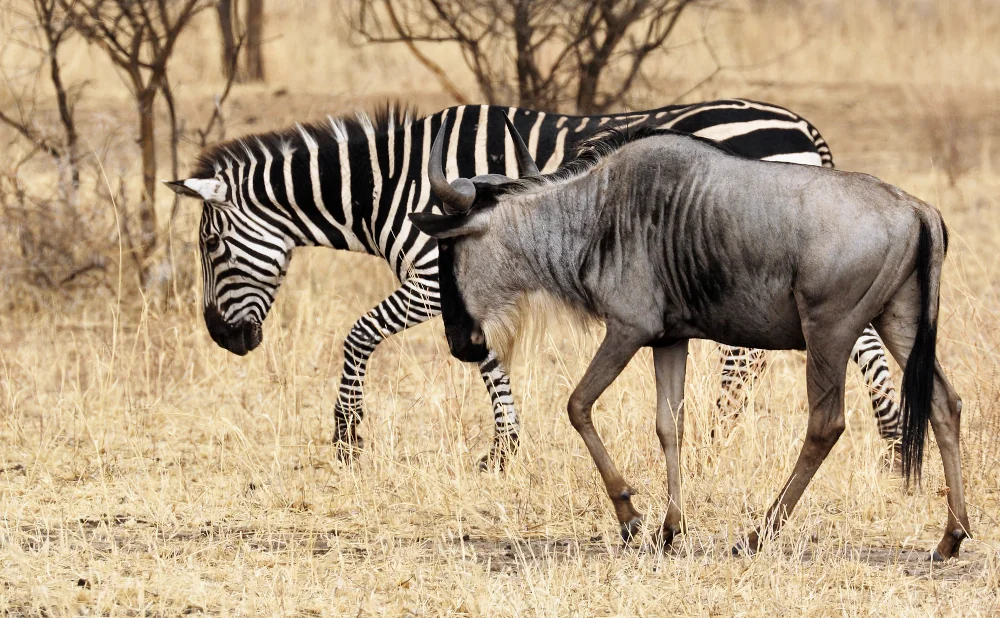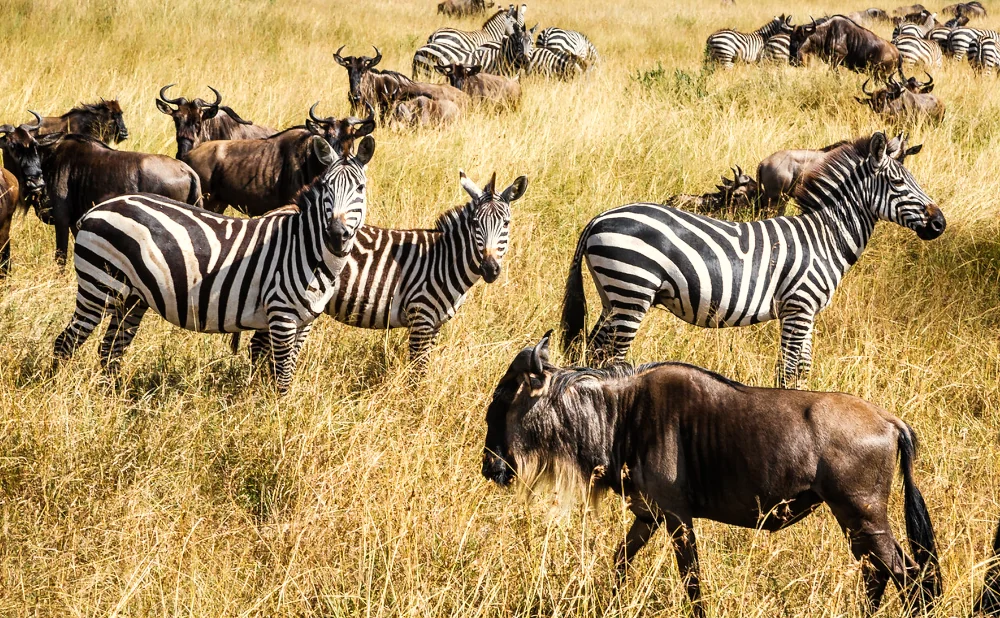Comparing Pronghorn and Gazelle: Key Differences
In the world of swift-footed mammals, pronghorns and gazelles stand out as icons of speed and agility. Though often compared due to their impressive velocities and similar appearances, these creatures belong to distinct classifications and exhibit unique characteristics that differentiate them. This article delves into the key differences between pronghorns and gazelles, providing insights into their biology, habitat, and behaviors.
Taxonomy and Classification
To begin with, it is essential to understand that pronghorns and gazelles are not direct relatives. Pronghorns (Antilocapra americana) are native to North America and are the only surviving members of the family Antilocapridae. Despite their antelope-like appearance, pronghorns are not true antelopes.
Gazelles, on the other hand, belong to the Bovidae family, which includes true antelopes, cattle, goats, and sheep. Gazelles are distributed across Africa and parts of Asia, thriving in arid and semi-arid environments. Their classification places them within the genus Gazella, although several species exist within other genera.
Morphological Distinctions
Physical Appearance
Pronghorns and gazelles exhibit several morphological differences, despite their superficial similarities. Pronghorns are characterized by their large, pronged horns, which both males and females possess, although males have more prominent horns. These horns are unique in that they shed and regrow annually, a feature not observed in gazelles.
Gazelles typically have slender, graceful bodies with long, ringed horns that curve backward. Unlike pronghorns, the horn structure in gazelles is permanent and does not shed. The coat colors in both animals can vary, but gazelles often display more pronounced markings, such as facial stripes and rump patches.
Size and Build
Pronghorns generally exhibit a more robust build compared to gazelles. They stand about 81 to 104 cm at the shoulder and weigh between 36 to 70 kg. Their muscular bodies are adapted for endurance running, a necessity in their open prairie habitats.
Conversely, gazelles are usually lighter, with a height ranging from 60 to 110 cm at the shoulder and weights between 12 to 85 kg, depending on the species. Their slender bodies and long legs make them adept at quick bursts of speed, which is crucial for evading predators in their environments.
Speed and Locomotion
One of the most fascinating aspects of these animals is their speed. Pronghorns are renowned for their extraordinary velocity, capable of reaching speeds up to 55 mph (88 km/h). However, their true prowess lies in their stamina, as they can sustain high speeds over long distances, an adaptation that allows them to outrun predators across the expansive North American plains.
Gazelles, while also incredibly fast, are generally faster in short sprints rather than sustained runs. They can reach speeds of 50 to 60 mph (80 to 97 km/h) but are more suited to quick, agile maneuvers to evade predators. This ability is vital in their native grasslands and savannas, where they face numerous threats.
Habitat and Distribution
Pronghorn Habitat
Pronghorns inhabit the open plains, deserts, and grasslands of North America, primarily in the United States, Canada, and Mexico. Their preference for wide, open spaces aligns with their speed and need for visibility to detect predators from a distance. Pronghorns are well-adapted to the harsh climates of these regions, with a keen ability to find food and water in arid conditions.
Gazelle Habitat
Gazelles are found across the African continent and into parts of Asia, with their habitats ranging from savannas and grasslands to semi-desert areas. Their environment is often characterized by scarce vegetation, requiring gazelles to be highly resourceful in their search for food and water. The diverse habitats of gazelles contribute to their adaptability and survival across various ecosystems.
Behavioral Traits
Social Structure
Pronghorns typically form small, loose herds, although larger groups may congregate during migration or breeding seasons. Their social structure is relatively flexible, with males establishing territories during the mating season to attract females.
Gazelles exhibit more complex social behavior, often forming larger herds for protection against predators. Some species, like the Thomson's gazelle, display strong territorial instincts, with males defending their territories aggressively during the rut.
Predation and Defense
Both pronghorns and gazelles face significant predation pressures in their respective environments. Pronghorns rely on their exceptional speed and keen eyesight to evade predators such as coyotes and wolves. They also employ a unique bounding gait called "stotting" to confuse and deter predators.
Gazelles, living in predator-rich environments, have developed a range of defensive behaviors. Their acute senses and agile movements help them avoid predators like lions, cheetahs, and hyenas. Some species also engage in stotting, a high-jumping display that signals fitness and deters pursuit.
Conservation Status
Both pronghorns and gazelles face conservation challenges, although their situations differ significantly. Pronghorn populations have rebounded in recent years due to successful conservation efforts, but habitat loss and fragmentation remain concerns.
Gazelles, with numerous species across diverse regions, face varying levels of threat. Some species, like the Arabian gazelle, are critically endangered due to habitat destruction and poaching, while others maintain stable populations. Conservation efforts focus on habitat protection and anti-poaching measures to ensure their survival.
In summary, pronghorns and gazelles, while often grouped together due to their speed and appearance, are distinct in many ways. From taxonomy and morphology to habitat and behavior, these animals have adapted uniquely to their environments. Understanding these differences not only enriches our knowledge of these remarkable creatures but also underscores the importance of tailored conservation efforts to preserve their respective habitats and populations.











